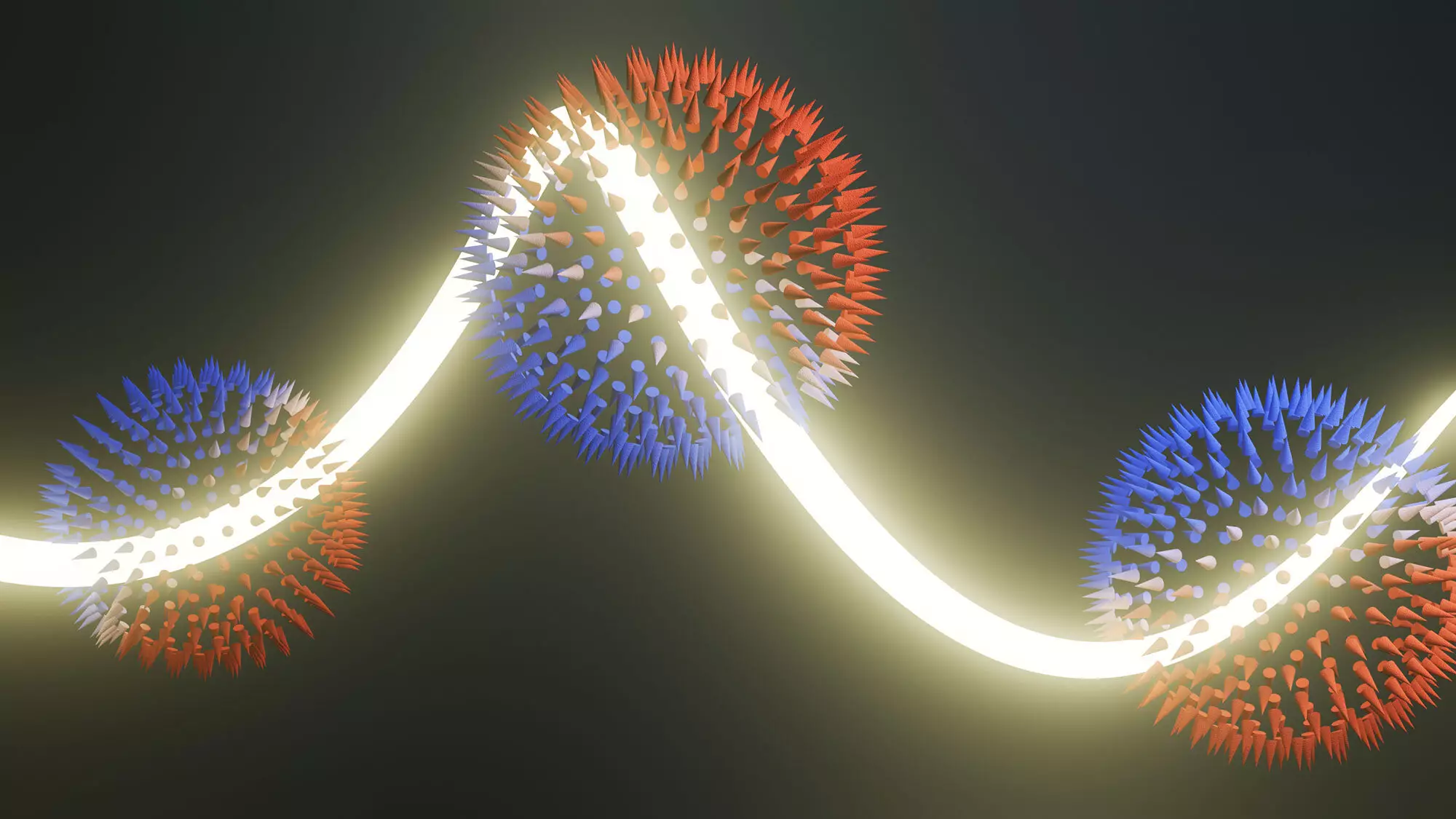Orbitronics, an emerging field poised to revolutionize electronics, focuses on harnessing the orbital angular momentum (OAM) of electrons—an intrinsic property that offers more than just electrical charge for information transfer. With the growing concerns over energy efficiency and environmental impact in traditional electronic devices, researchers are increasingly drawn to this innovative approach. The recent breakthrough achieved by an international team, which includes experts from the Paul Scherrer Institute (PSI) and Max Planck Institutes, presents a significant leap forward in the practical applications of orbitronics, especially in memory and data transfer technologies.
In the realm of theoretical physics, OAM monopoles have long been conjectured yet elusive. These theoretical constructs involve the uniform radiative emission of OAM from a central point, akin to the spikes of a hedgehog. The isotropic nature of these monopoles provides an intriguing advantage: they enable the generation of OAM flows in any direction without the need for additional external influences. The potential for such a unique property could simplify the implementation of stable and efficient energy systems in electronic devices.
Recent research has identified chiral topological semi-metals as promising candidates for facilitating currents of OAMs. Discovered at PSI in 2019, these materials possess a helical atomic structure that allows for natural OAM texture generation. Unlike traditional materials currently explored in orbitronics, chiral topological semi-metals introduce an intrinsic capability for producing OAM without external stimuli. This intrinsic characteristic could lead to more robust and practical methodologies for harnessing orbital angular momentum in real-world applications.
Michael Schüler, a physicist leading the investigation at PSI, notes that the structural “handedness” of these materials resembles biological DNA, giving them inherent patterns conducive to OAM generation. This builds a solid foundation to streamline the complex processes typically required to manipulate OAM in experimental settings.
Despite the theoretical allure of OAM monopoles, previous experimental attempts have largely failed to deliver concrete evidence. The methods employed, such as Circular Dichroism in Angle-Resolved Photoemission Spectroscopy (CD-ARPES), generated data that was difficult to interpret. Many researchers grappled with realizing the potential of OAM monopoles due to the assumptions made regarding the measured signals.
The recent study from PSI and its collaborators succeeded where others faltered by rigorously analyzing and varying photon energies during experiments. This innovative approach unveiled the actual interactions of the OAM indicators within the complexities of the CD-ARPES data, proving that the relationship was neither straightforward nor directly proportional. With this new understanding, researchers could discern the telltale signs of OAM monopoles where earlier observations had blurred their presence.
The Implications of the Discovery
The implications of this research are vast and span various domains within electronics and materials science. With the confirmed existence of OAM monopoles, researchers are now equipped to delve deeper into the potential applications of these fascinating entities in orbitronics. The unique capacity to manipulate the polarity of monopoles using materials with mirror-image chirality opens exciting avenues for designing directional flow systems in devices, enhancing their functionality and efficiency dramatically.
Moreover, optimizing the ability to visualize and manipulate OAM monopoles will empower further exploration across different materials. There lies immense potential in refining these strategies to develop custom devices tailored to specific applications, resulting in a new paradigm of energy-efficient electronics that could mitigate environmental impacts and reshape technology as we know it.
As we push forward into an era increasingly defined by conservation and efficiency, the discovery of orbital angular momentum monopoles heralds a promising future for orbitronics. This evolution from theory to experimental confirmation underscores the importance of interdisciplinary collaboration and innovative thinking in scientific progress. As further studies probe the boundaries of chiral topological semi-metals and their OAM capabilities, we stand on the brink of technological advancements that could redefine the landscape of electronics, creating devices that are not only high-performing but also environmentally conscious. The journey of orbitronics has only just begun, but its trajectory is set to reshape the future.


Leave a Reply
You must be logged in to post a comment.